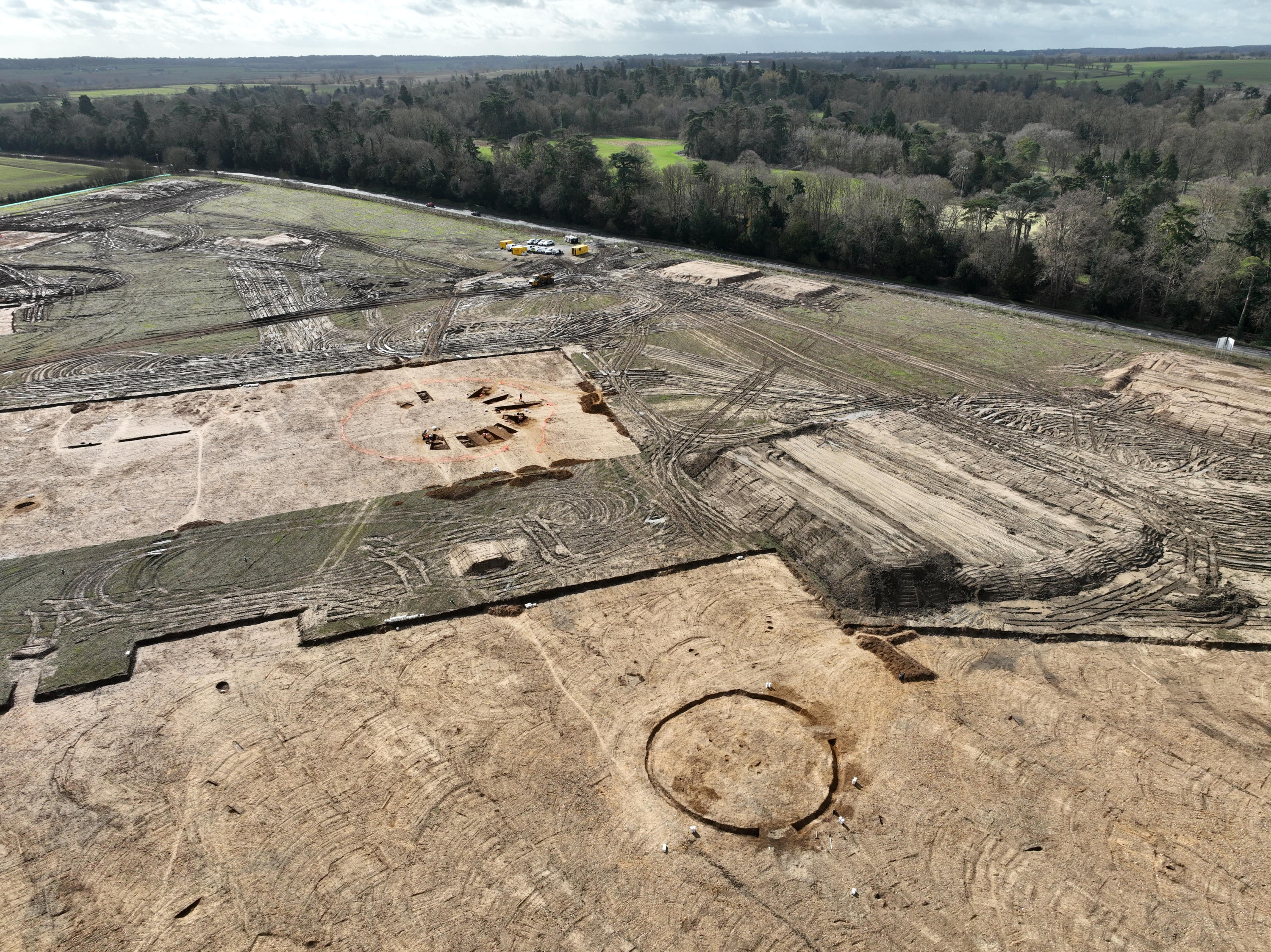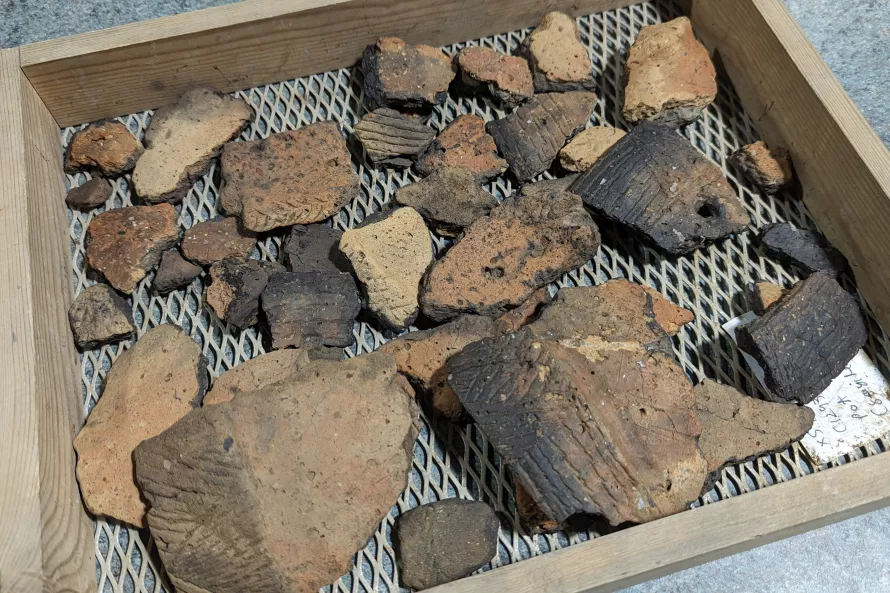Before we arrived on site, we knew that we were going to be finding lots of Anglo-Saxon remains. So it’s been a very nice surprise to discover that we’ve actually got quite a bit in the way of prehistoric activity too. One major feature that we were already expecting to find (thanks to the previous evaluation work) is a Bronze Age round barrow. A barrow is a large circular ditch where the soil is piled in the centre to make a mound. These barrows serve as both a landscape feature – designed to be visible from far away – and as a funerary monument where the local community would bury their dead and carry out ceremonial activities.
Now that we’ve started to investigate our barrow, it looks to be more complicated than originally anticipated because we’ve found two ditches. Our current running theory is that this feature started off as a Neolithic henge which was then repurposed during the Bronze Age and turned into a barrow.

Barrow section.
Right, let’s talk about henges…
When you hear the word ‘henge’, most people will automatically think of Stonehenge. But Stonehenge isn’t actually a proper henge! A henge, in the traditional sense of the word, is a circular ditched enclosure with one or more entrances and the bank is on the outside of the ditch. Henges vary quite a lot in size but tend to measure between 20m and 100m in diameter. Ours is about 30m in diameter, so it’s at the smaller end of the scale. There’s a lot of uncertainty around what henges were for, and at the end of the day, we really don’t know! But one thing we can say is that as the banks were located on the outside of the ditch, they weren’t defensive structures. It therefore seems more likely that they had a ceremonial function, where communities would gather. We’re hoping that the finds (pottery, flint, animal bone etc) that we collect from the backfilled ditch will give us some more clues.
As well as the henge, we’ve also found a cursus! Cursus monuments are long, narrow enclosures made of two parallel ditches which are closed off at one end, and where the bank on the inside. This perhaps doesn’t sound terribly exciting and for the team on site, it’s not a particularly thrilling feature to dig in all honesty but it is extremely interesting from a landscape perspective to help us understand the wider context of the site. Cursus monuments very hugely in terms of their length (anything from 100m to 10km) and width (20m to 150m, for example). We don’t know how long our cursus is, because it extends beyond the limits of the site, so all we can say for now is that it’s at least 110m long and is 30m. As to the function of a cursus, yet again, we aren’t sure! But the general consensus is that they are processional ways and they are closely integrated with other contemporary monuments (like henges) and with the landscape.

Drone view showing the ring ditch and barrow henge.
In archaeology, where you find one prehistoric monument, you’re probably going to find others nearby – such as the cursus, the henge and the barrow. So we’re very lucky in that we’ve got yet another monument on the site! Our final monument currently is being referred to by the somewhat unassuming catchall title of ring ditch. This is because we aren’t sure of it’s function as of yet, so are calling it by what it looks like – a ditch which forms a circle. Our ring ditch has a diameter of around 20m, which is about the same as the barrow. So it’s quite possible that this ring ditch is also a barrow.

The ring ditch under excavation by our wonderful team.
So overall, we’ve got quite a lot of rather fine prehistoric archaeology, which is keeping the team on site nicely entertained.


